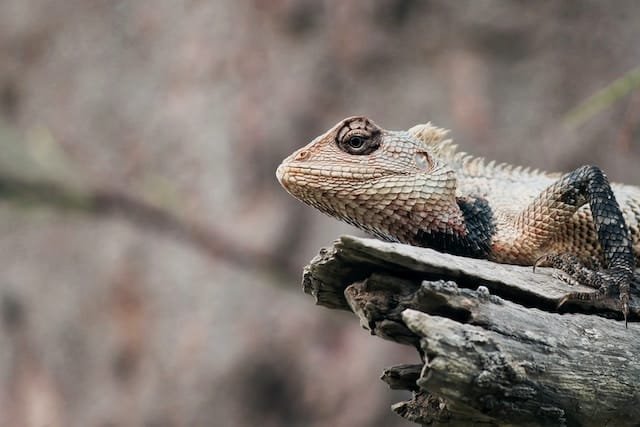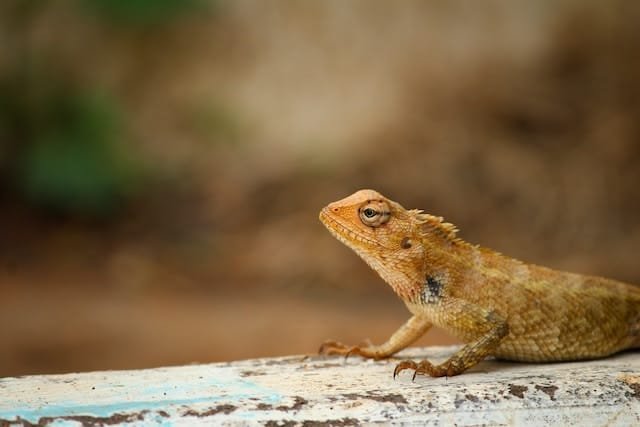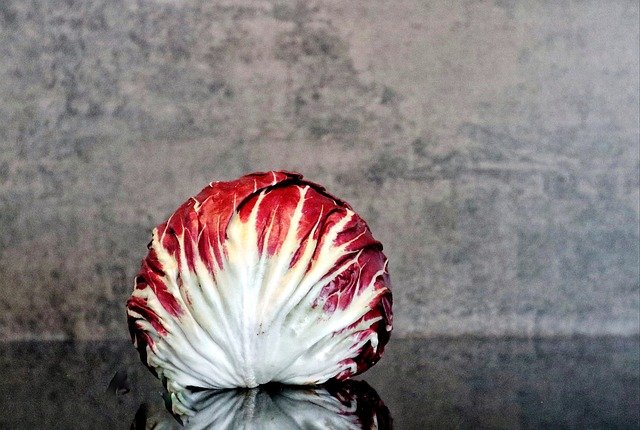Yes, I understand. Here are a couple of introduction paragraphs for an article about whether bearded dragons can eat radicchio:
Radicchio is a type of leafy vegetable that belongs to the chicory family. It has a slightly bitter taste and is often used in salads or as a garnish. If you’re a bearded dragon owner, you may be wondering whether this vegetable is safe for your pet to eat. In this article, we will explore whether bearded dragons can eat radicchio, and if so, how much and how often.
As responsible pet owners, we want to make sure we’re feeding our bearded dragons a balanced and nutritious diet. While bearded dragons are omnivores and can eat a variety of fruits and vegetables, not all foods are safe for them. Some vegetables can cause digestive problems or even be toxic to these reptiles. In this article, we will focus specifically on radicchio and whether it should be included in your bearded dragon’s diet.

Understanding Bearded Dragons
Bearded Dragons’ Diet
As responsible pet owners, we must understand the dietary requirements of our bearded dragons. A balanced diet is essential for their overall health and wellbeing. Bearded dragons are omnivores, which means they eat both plants and animals. In the wild, they feed on a variety of insects, small animals, and plants.
When it comes to feeding our bearded dragons, we should aim to replicate their natural diet as closely as possible. A healthy diet for a bearded dragon should consist of:
- Vegetables: dark leafy greens, carrots, squash, sweet potatoes, and bell peppers.
- Fruits: strawberries, blueberries, raspberries, and mangoes.
- Protein: crickets, mealworms, superworms, and dubia roaches.
- Calcium: dusting their food with calcium powder is essential for their bone health.
It is important to note that bearded dragons should not be fed spinach, kale, or lettuce as they contain high levels of oxalates, which can bind to calcium and prevent its absorption.
Bearded Dragons’ Digestive System
Bearded dragons have a unique digestive system that allows them to extract nutrients from their food efficiently. They have a large stomach and a long intestine, which helps them digest their food slowly. This slow digestion process allows for maximum nutrient absorption.
Bearded dragons are unable to digest food properly if their body temperature is too low. Therefore, it is crucial to maintain the temperature of their enclosure between 95-110°F. This temperature range allows them to digest their food correctly and prevent digestive issues.
In summary, bearded dragons are omnivores, and a balanced diet is essential for their health. We should aim to replicate their natural diet as closely as possible, and avoid feeding them foods that are high in oxalates. It is also important to maintain the temperature of their enclosure to ensure proper digestion.
Radicchio and Its Nutritional Content
Radicchio is a leafy vegetable that belongs to the chicory family. It has a slightly bitter taste and is often used in salads or as a garnish. Radicchio is a good source of vitamins and minerals that can benefit the overall health of your bearded dragon.
Radicchio is low in calories and high in fiber, making it a great addition to your bearded dragon’s diet. It contains a variety of vitamins and minerals such as vitamin K, vitamin C, folate, and manganese. These nutrients can help support your bearded dragon’s immune system, bone health, and overall well-being.
However, it is important to note that radicchio also contains a high amount of oxalates, which can bind to calcium and prevent its absorption. This can lead to calcium deficiency and other health issues in your bearded dragon. Therefore, radicchio should only be fed to your bearded dragon in moderation and as part of a balanced diet.
In conclusion, while radicchio can provide some nutritional benefits to your bearded dragon, it should be fed in moderation due to its high oxalate content. As with any new food, it is important to introduce radicchio slowly and monitor your bearded dragon’s reaction to it.

Can Bearded Dragons Eat Radicchio
Radicchio is a leafy vegetable that belongs to the chicory family. It is a popular ingredient in salads and can be found in many supermarkets. As bearded dragon owners, we may wonder if radicchio is safe for our pets to eat.
After conducting research and consulting with experts, we have found that bearded dragons can eat radicchio in moderation. However, it should not be a staple in their diet.
Radicchio is high in fiber and contains vitamins A, C, and K. These nutrients are beneficial for bearded dragons, but it is important to note that radicchio also contains oxalates. Oxalates can bind to calcium in the body, which can lead to metabolic bone disease if consumed in large amounts.
Therefore, it is recommended to feed radicchio to bearded dragons in small amounts and infrequently. It should not make up more than 10% of their diet.
When feeding radicchio to bearded dragons, it is important to wash it thoroughly and remove any stems or tough parts. It can be served raw or lightly steamed. Bearded dragons may also enjoy other leafy greens such as collard greens, mustard greens, and turnip greens.
In conclusion, bearded dragons can eat radicchio in moderation as part of a varied diet. However, it should not be a staple food and should be fed infrequently. As responsible pet owners, it is important to always research and consult with experts before introducing new foods to our pets’ diets.
Benefits of Radicchio for Bearded Dragons
Radicchio is a type of leafy vegetable that belongs to the chicory family. It is a great source of nutrients and can be a healthy addition to your bearded dragon’s diet. Here are some benefits of feeding radicchio to your bearded dragon:
- High in fiber: Radicchio is high in fiber, which is essential for maintaining a healthy digestive system in bearded dragons. Fiber helps keep the digestive tract moving and prevents constipation.
- Rich in vitamins and minerals: Radicchio is packed with vitamins and minerals that are essential for the overall health of your bearded dragon. It is high in vitamin K, vitamin C, and vitamin A, which are all important for maintaining healthy bones, skin, and eyes.
- Low in oxalates: Radicchio is a low-oxalate vegetable, which means it is a safe option for bearded dragons who are prone to developing kidney stones. High-oxalate vegetables can increase the risk of kidney stones in bearded dragons, so it’s important to choose low-oxalate options like radicchio.
- Adds variety to the diet: Bearded dragons can get bored of eating the same foods every day. Adding radicchio to their diet can provide some variety and keep them interested in their food.
It’s important to note that while radicchio can be a healthy addition to your bearded dragon’s diet, it should not be the main staple. It should be fed in moderation and as part of a varied diet that includes other vegetables, fruits, and insects.
Potential Risks of Feeding Radicchio to Bearded Dragons
When it comes to feeding bearded dragons, it’s important to ensure that their diet is well-balanced and nutritious. While radicchio may seem like a healthy option, there are potential risks associated with feeding it to bearded dragons.
Firstly, radicchio contains high levels of oxalates, which can bind to calcium in the body and prevent its absorption. This can lead to calcium deficiency and metabolic bone disease in bearded dragons if they consume too much radicchio.
Furthermore, radicchio is also high in nitrates, which can be toxic to bearded dragons in large amounts. Excessive amounts of nitrates can cause a condition known as nitrate toxicity, which can lead to seizures, tremors, and even death in severe cases.
Lastly, radicchio is also high in fiber, which can cause digestive issues in bearded dragons if they consume too much of it. This can lead to bloating, constipation, and diarrhea, which can be uncomfortable and potentially harmful to their health.
Overall, while radicchio may be a tasty treat for bearded dragons in moderation, it’s important to be aware of the potential risks associated with feeding it to them. It’s always best to consult with a veterinarian or reptile nutritionist to ensure that your bearded dragon’s diet is well-balanced and meets their nutritional needs.
How to Feed Radicchio to Bearded Dragons
Preparation Methods
When feeding radicchio to bearded dragons, it is important to prepare it properly to ensure it is safe and easy for them to eat. Here are some preparation methods to follow:
- Wash the radicchio thoroughly with water to remove any dirt or debris.
- Cut the radicchio into small, bite-sized pieces.
- Remove any tough stems or veins.
- If the radicchio is too tough for your bearded dragon to eat, you can try blanching it by boiling it for a few minutes and then rinsing it with cold water.
Feeding Frequency
Radicchio can be a healthy addition to a bearded dragon’s diet, but it should be fed in moderation. Here are some guidelines for feeding frequency:
- Offer radicchio as a treat, not as a staple food.
- Feed radicchio in small amounts, no more than once or twice a week.
- If your bearded dragon shows signs of digestive issues after eating radicchio, such as diarrhea or constipation, stop feeding it to them.
Overall, radicchio can be a nutritious and tasty addition to your bearded dragon’s diet when prepared and fed correctly. Remember to always monitor your pet’s health and adjust their diet accordingly.

Frequently Asked Questions
What greens can bearded dragons eat everyday?
Bearded dragons can eat a variety of greens every day, including collard greens, mustard greens, turnip greens, and dandelion greens. These greens provide essential vitamins and minerals that are necessary for their health.
Fruits for bearded dragons?
Fruits should be given to bearded dragons occasionally as a treat. Good options include berries, melons, and papayas. However, fruits should not make up a significant portion of their diet as they are high in sugar.
What can bearded dragons eat daily?
Bearded dragons should have a balanced diet that includes a variety of greens, vegetables, and protein sources. A good ratio is 80% greens and vegetables and 20% protein. Some good protein sources include crickets, mealworms, and dubia roaches.
Can bearded dragons eat cabbage?
Cabbage should be avoided as it can cause bloating and gas in bearded dragons. It also contains goitrogens which can interfere with thyroid function.
What kind of lettuce can bearded dragons eat?
Bearded dragons can eat certain types of lettuce, including romaine lettuce, green leaf lettuce, and red leaf lettuce. However, iceberg lettuce should be avoided as it has little nutritional value and can cause digestive problems.
What vegetables are toxic to bearded dragons?
Some vegetables should be avoided as they are toxic to bearded dragons. These include avocado, rhubarb, and spinach. Additionally, vegetables that are high in oxalates, such as kale and spinach, should be fed in moderation.

I, Mark Antonelli am highly interested in pet care tips. The experiences I gained through university life in animal sciences were also helpful to identify the best tricks for caring for and feeding varying kinds of pets. I know the majority of people love to own a pet. Yet, there is a guilty of owing a Bearded Dragon due to a lack of information about how much friendly and peaceful they are. I thought of filling this gap with detailed writings about this Pogona genus Bearded Dragon. All my team is also giving me great support to fulfil my mission. Hope you will enjoy the journey with us.

